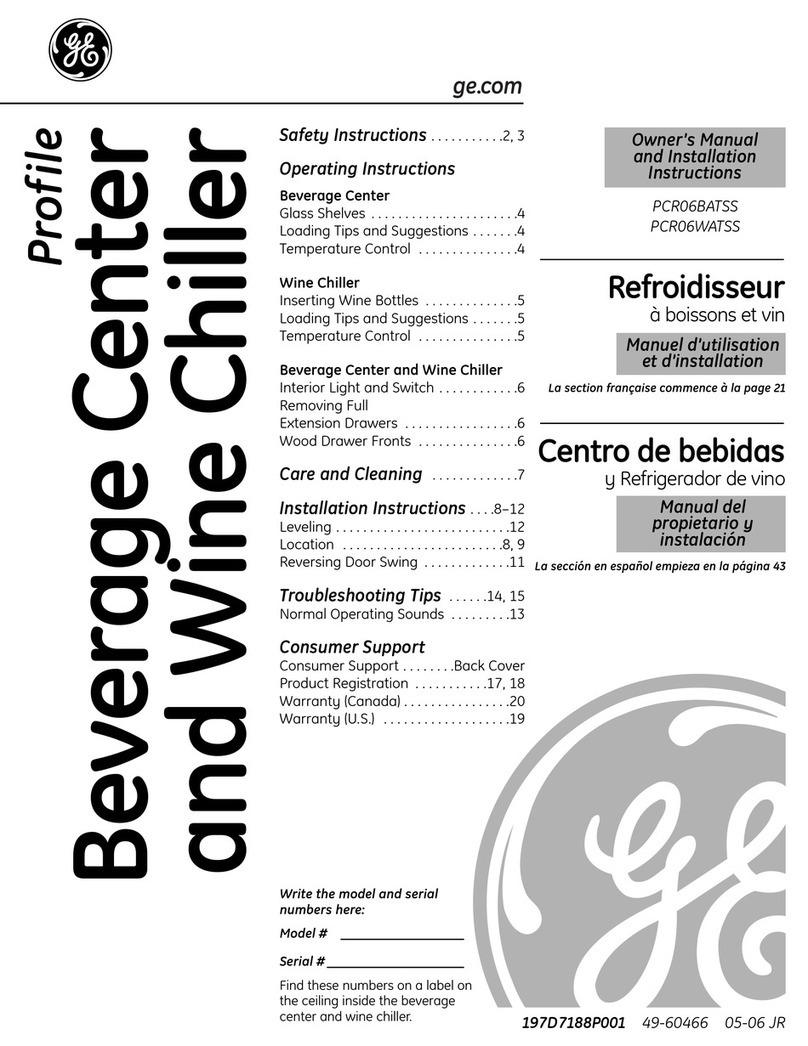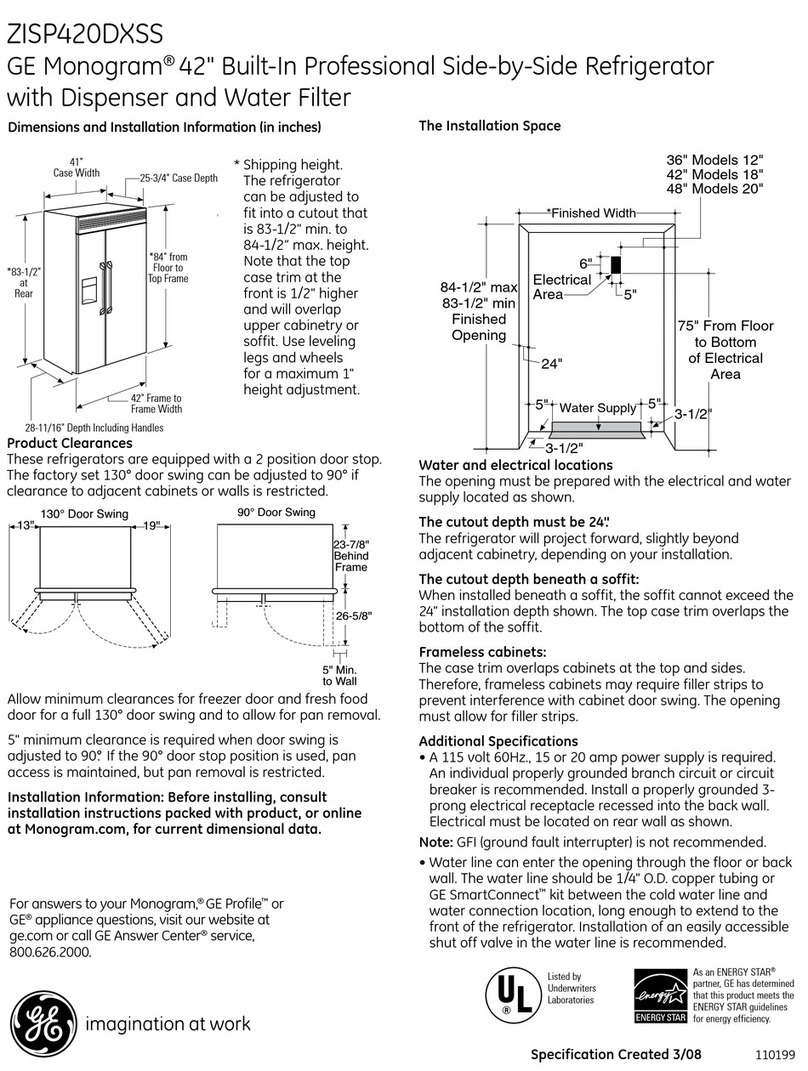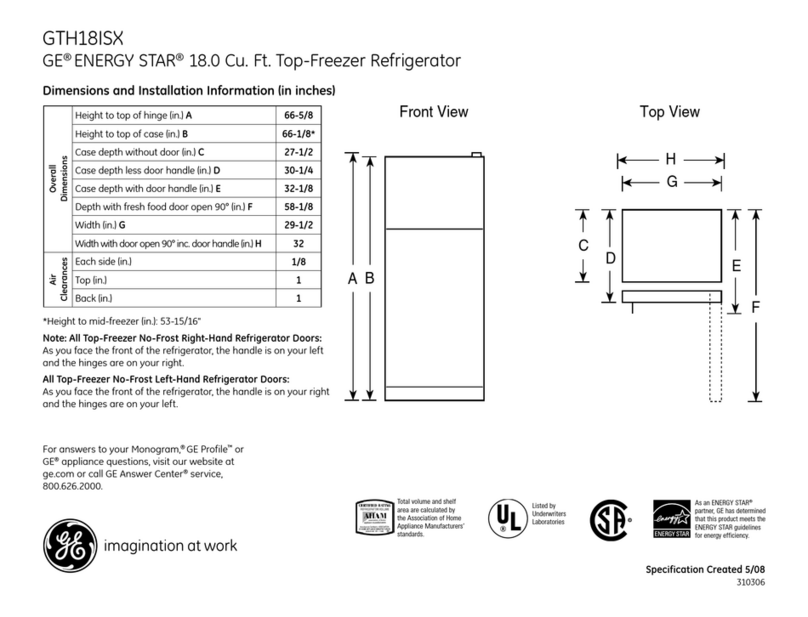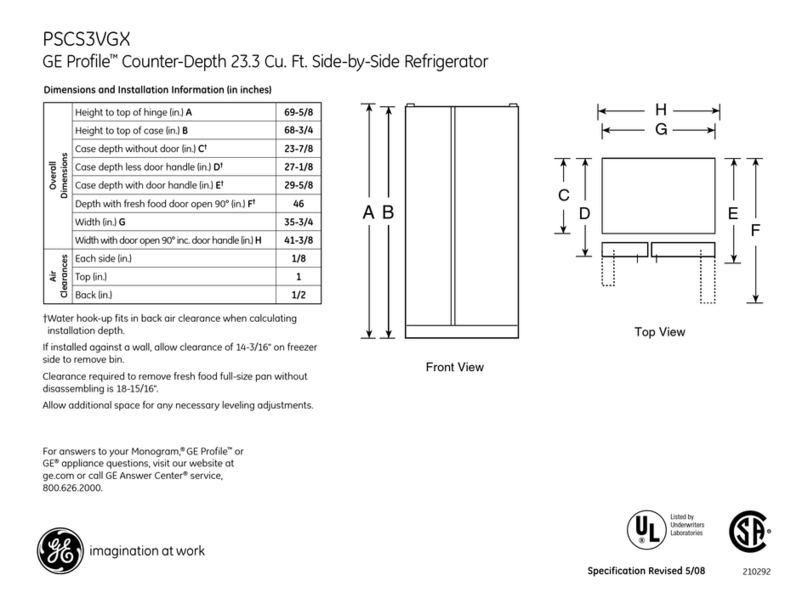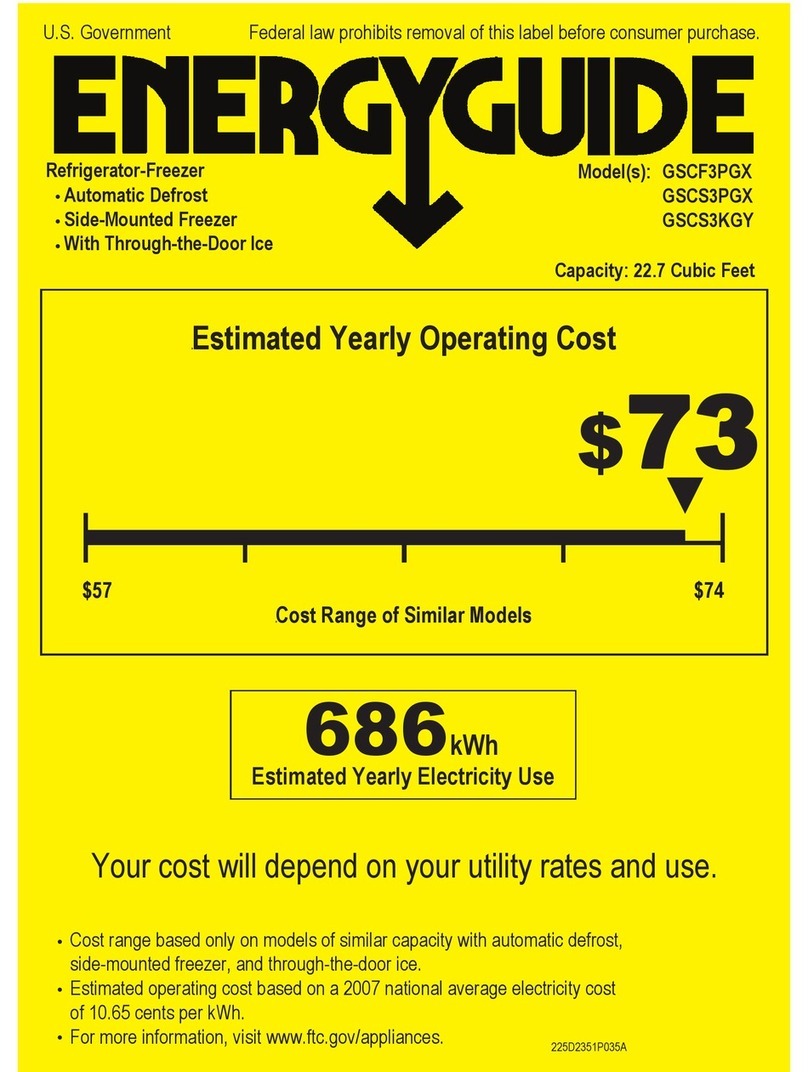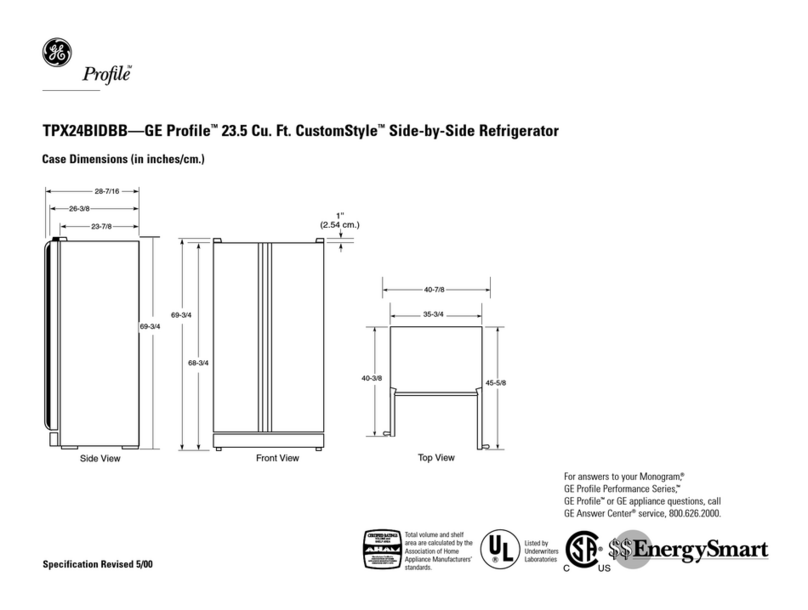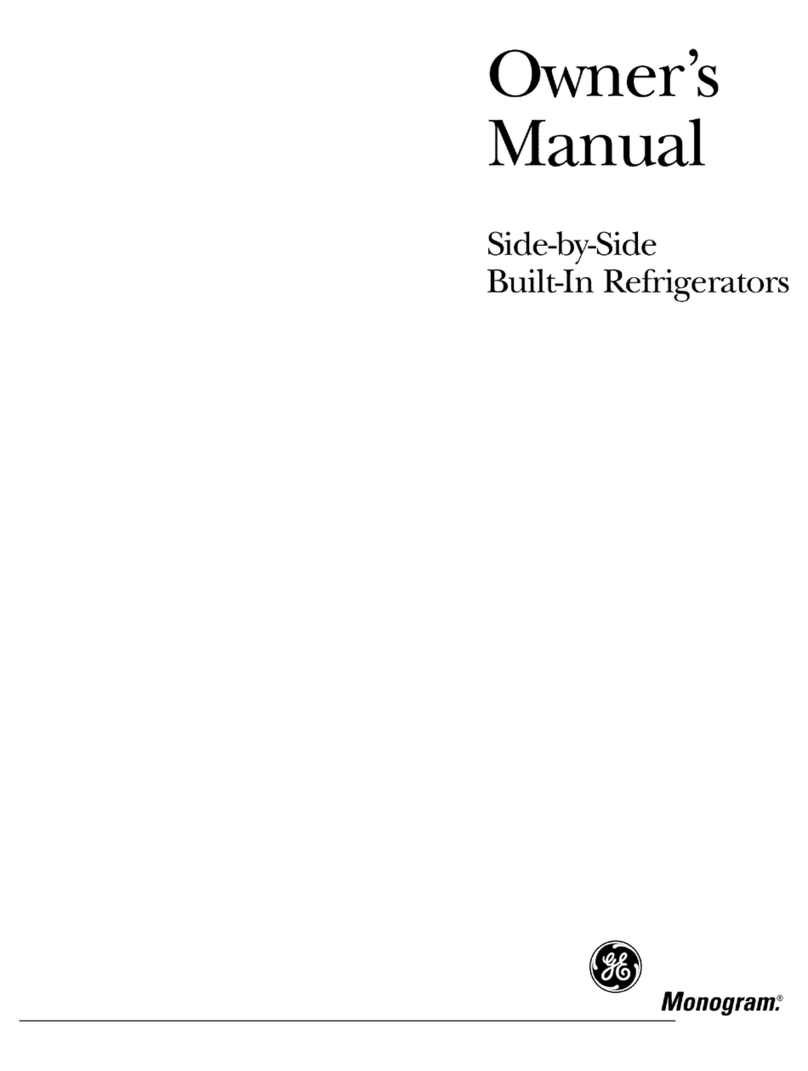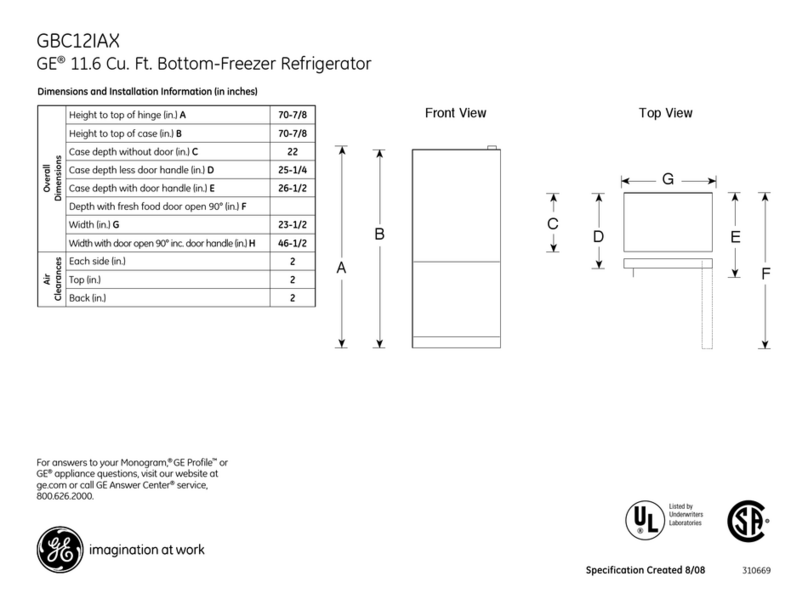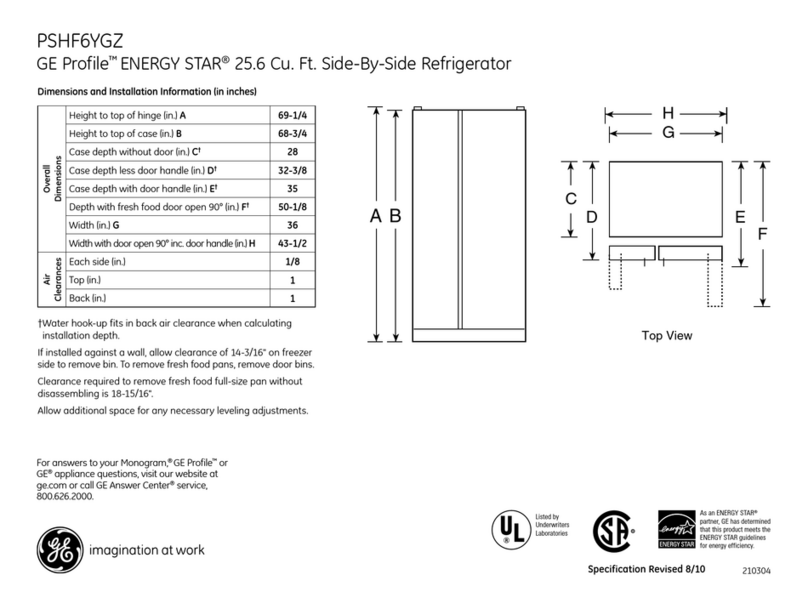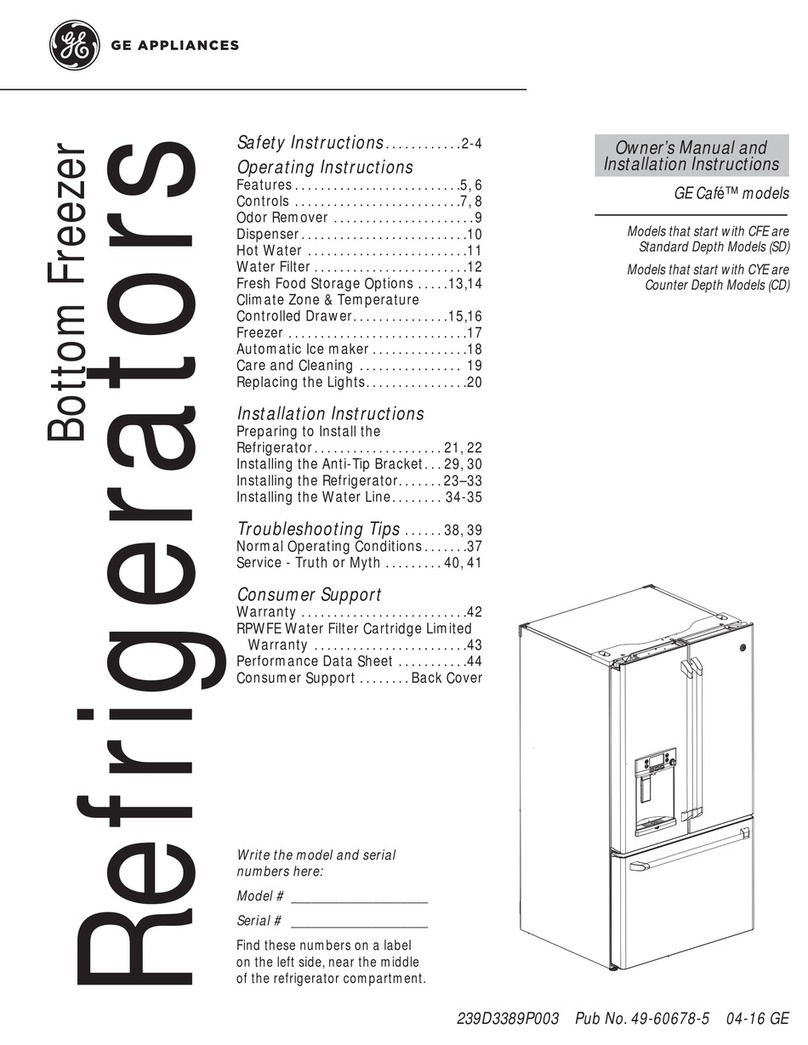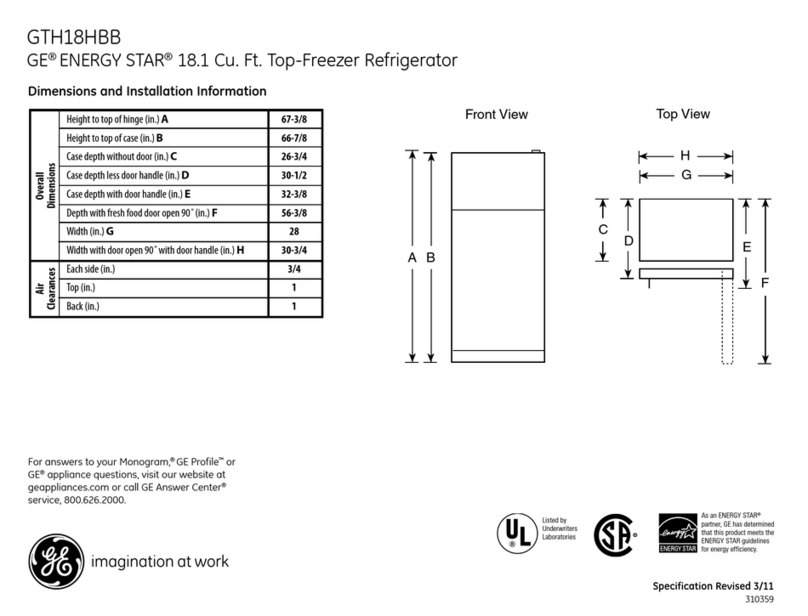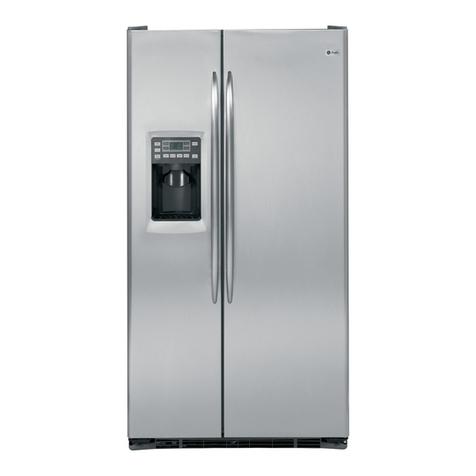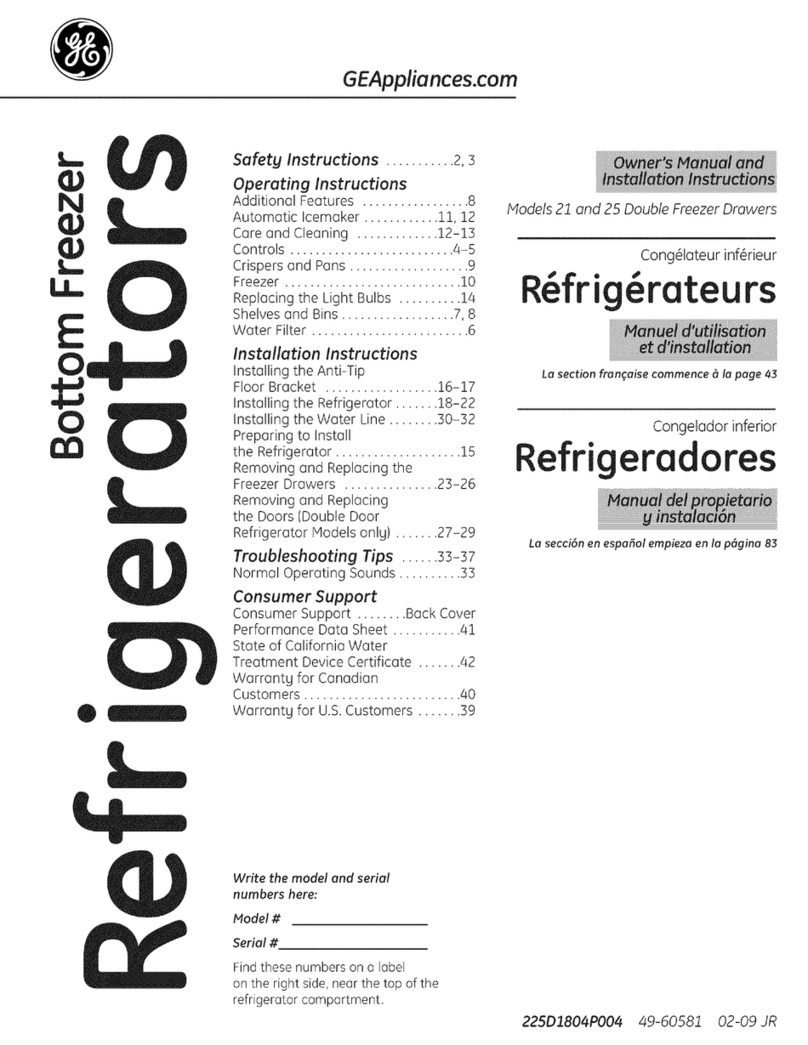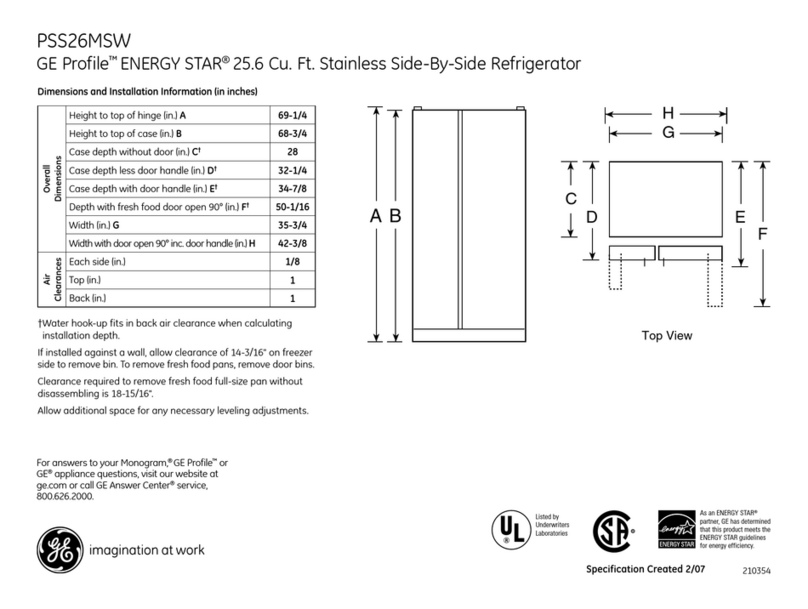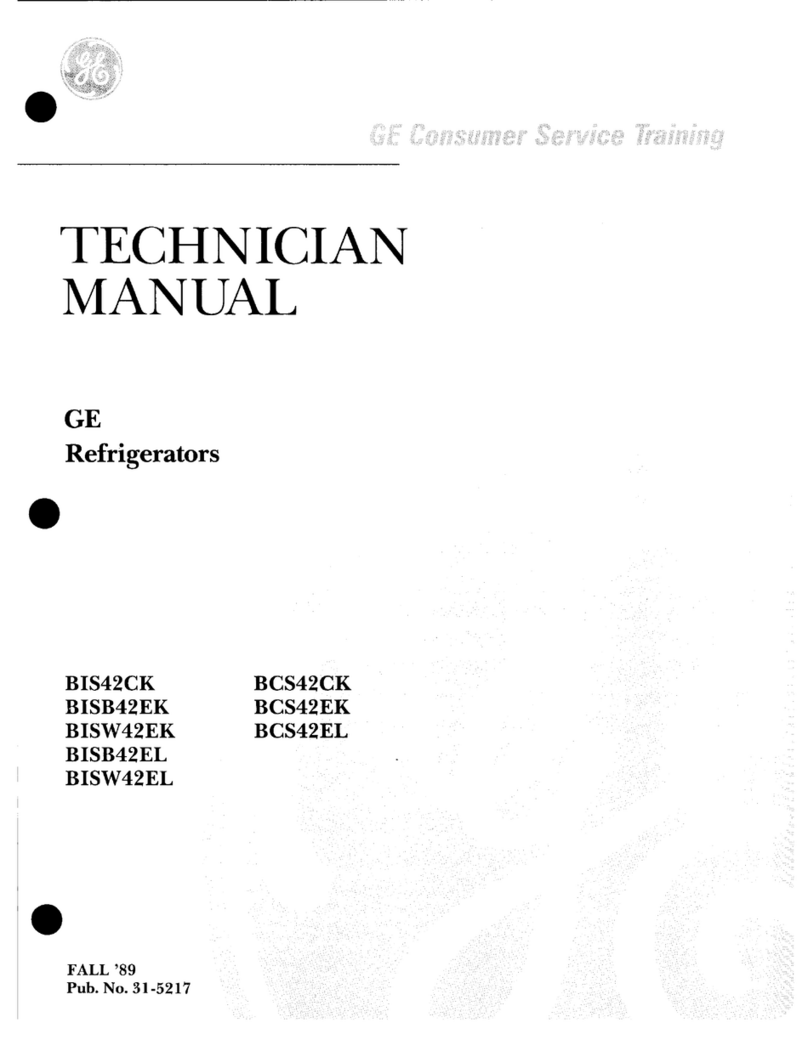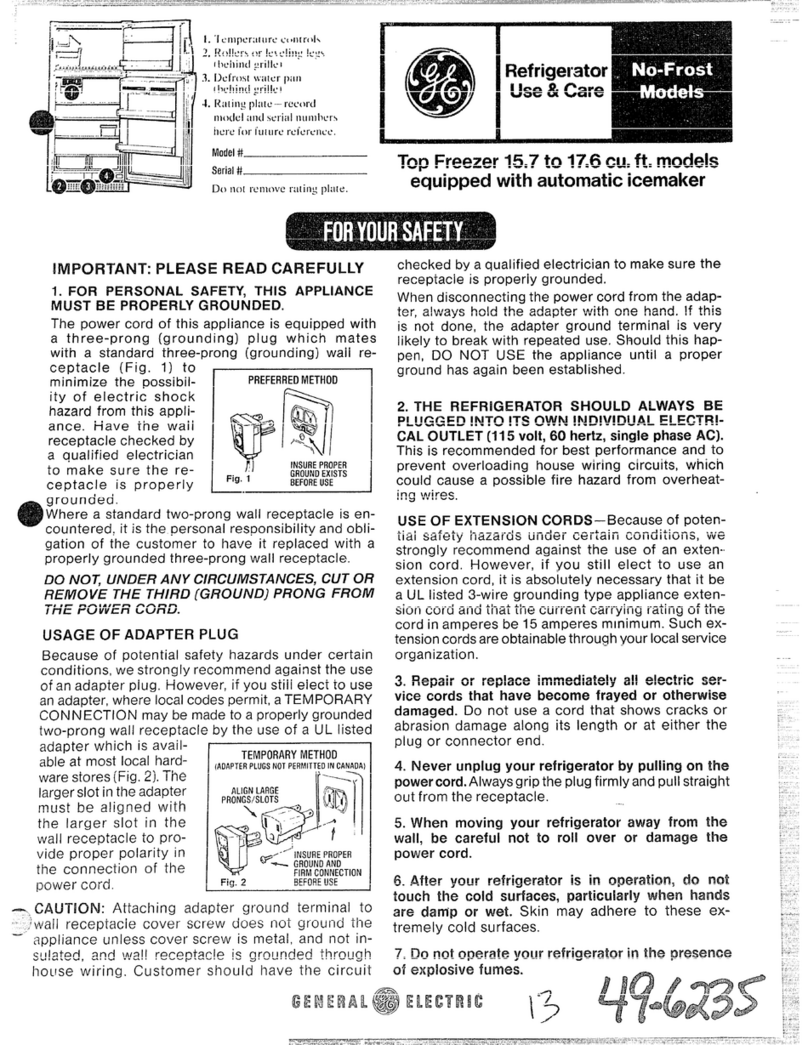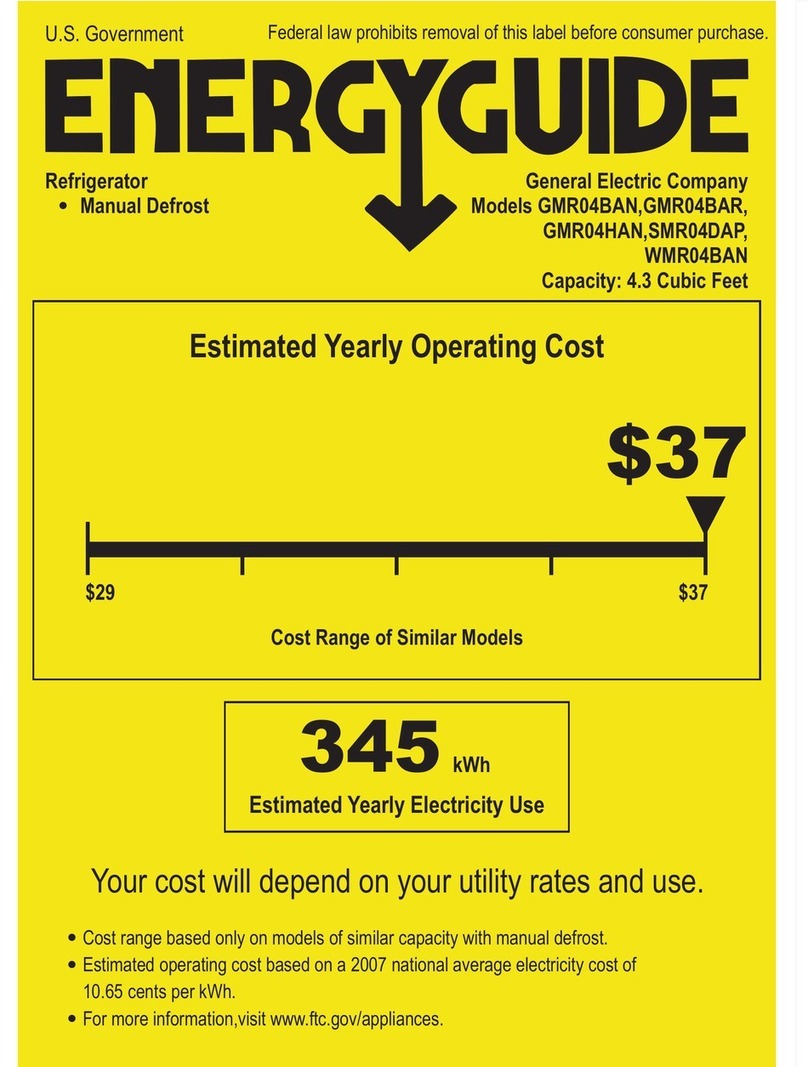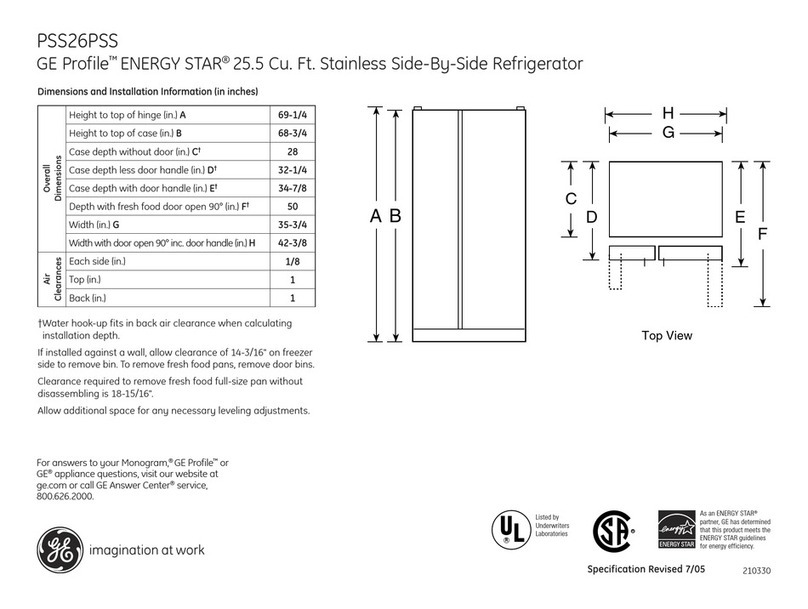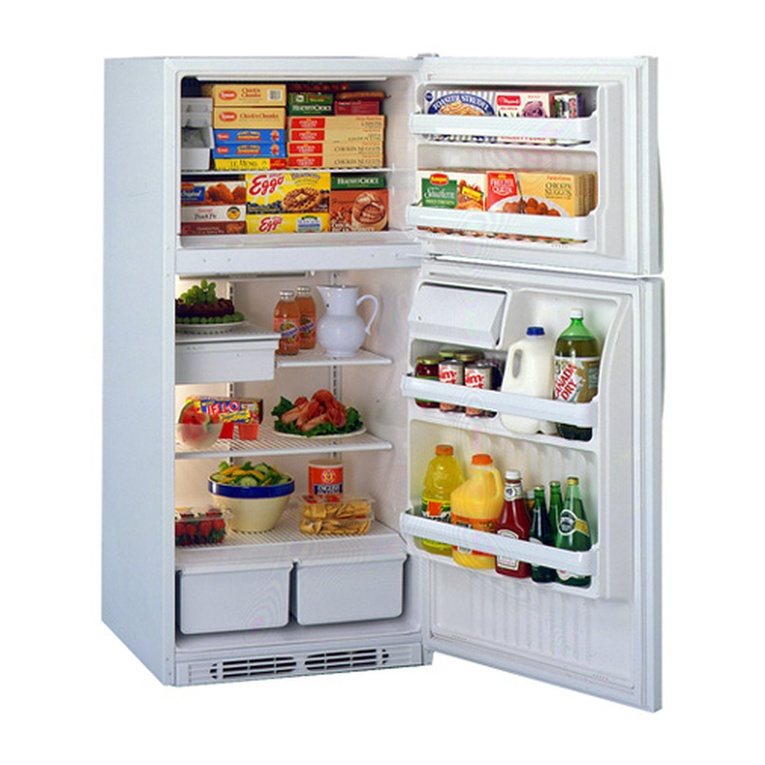SPECIFICATIONS
French Door Refrigerator
BEFORE YOU BEGIN
Instructions to your plumber: Install 1/2 inch stop cock (tap), located in the cabinetry or adjacent to, or if
possible above fridge cavity. Not to be located in fridge cavity.
* Technical Specifications and product sizes can be varied by manufacturer without notice. Any cut-outs for appliances should only be by physical measure-
ments. Drawings are not to scale. All information supplied is for general reference purposes only and is on the understanding that Kleenmaid Pty Ltd will not be
liable for any loss, liability or damage whatsoever arising as a result of reliance of such information.
CONNECTING THE REFRIGERATOR
TO THE HOUSE WATER LINE
(icemaker and dispenser models)
A cold water supply is required for automatic
icemaker operation. If there is not a cold water
supply, you will need to provide one.
BEFORE YOU BEGIN
The water line installation is not warranted by the
refrigerator or icemaker manufacturer. Follow these
recommendations carefully to minimize the risk of
expensive water damage.
Water hammer (water banging in the pipes) in
house plumbing can cause damage to refrigerator
parts and lead to water leakage or flooding. Call a
qualified plumber to correct water hammer before
installing the water supply line to the refrigerator.
To prevent burns and product damage, do not hook
up the water line to the hot water line.
If you use your refrigerator before connecting the
waterline, make sure the icemaker power switch is
in the 0 (off) position.
Do not install the icemaker tubing in areas where
temperatures fall below freezing.
When using any electrical device (such as a power
drill) during installation, be sure the device is
insulated or wired in a manner to prevent the hazard
or electric shock.
All installations must be in accordance with
local plumbing code requirements.
Installation of the icemaker must be done by a
qualified service technician.
WARNING! Connect to
potable water supply only.
NOTES:
It is the installer’s responsibility to ensure
plumbing is compliant with local codes and
regulations.
Before making the connection to the refrigerator,
be sure the refrigerator power cord is not
plugged into the wall outlet.
If your refrigerator does not have a water filter,
we recommend installing one if your water
supply has sand particles that could clog the
screen of the refrigerator’s water valve. Install it
in the water line near the refrigerator. If using GE
SmartConnectTM Refrigerator Tubing Kit, you will
need an additional tube (WX8X10002) to connect
the filter. Do not cut plastic tube to install filter.
•
•
•
!
1CONNECTING THE REFRIGERATOR
TO THE HOUSE WATER LINE
(cont.)
If you are using copper tubing, place a
compression nut and ferrule (sleeve) onto the end of
the tubing coming from the hose cold water supply.
If you are using the GE SmartConnectTM tubing,
the nuts are already assembled to the tubing.
If you are using copper tubing, insert the end of
the tubing into the refrigerator connection, at the
back of the refrigerator, as far as possible. While
holding the tubing, tighten the fitting.
If you are using GE SmartConnectTM tubing,
insert the molded end of the tubing into the
refrigerator connection at the back of the
refrigerator, and tighten the compression nut until it
is hand tight. Then tighten one aditional turn with a
wrench. Overtightening may cause leaks.
Fasten tuning into the clamp provided to hold it in
position. You may nee to pry open the clamp.
1
A
B
C
One of the illustrations below will look like the
connection on your refrigerator.
Icemaker-Ready models
